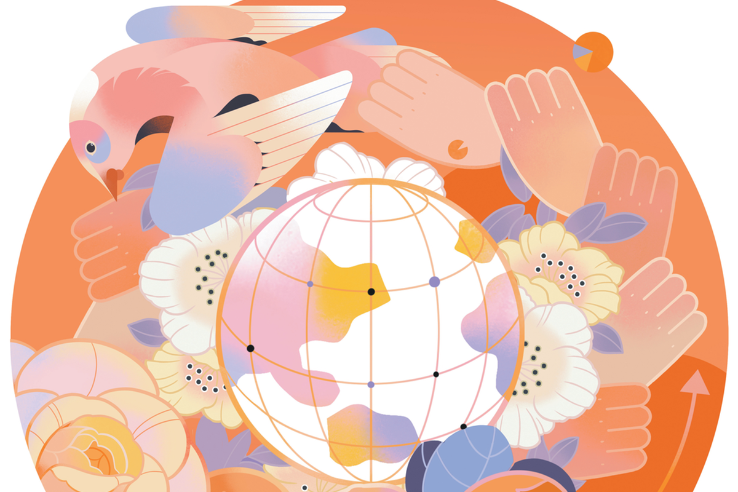What's on

Vision of meaning

In more than five decades as a painter, Dai Ze has been drawing with blurry vision caused by an eye disease. Despite that, he has produced a body of work to reflect a pursuit of truth and beauty. The still life and landscape pieces under his brush stroke evoke a sense of depth and serenity. Drawing from the Unseen, an exhibition at Anhui Art Museum in Hefei, is showing dozens of paintings throughout Dai's career, mostly landscapes. It presents the world that Dai has worked hard to portray by opening up all his senses to feel, touch and imagine. In the process, Dai keeps leveraging his understanding of art and life to a higher level.
9 am-5 pm, closed on Mondays.1 Chengdu Road, Binhu New District, Hefei, Anhui province.0551-6280-6800.
Zhejiang master

Zhuji, a scenic city in Zhejiang province, is known as the hometown of Xishi, a woman who lived more than 2,000 years ago and was hailed as one of the "four great beauties" of ancient China. The landscape and cultural accumulation of Zhuji also produced many painters and calligraphers, such as Yu Rentian (1908-84), a prominent figure in Zhejiang's art circle in the 20th century. Yu was an inheritor of the "spirit of self-cultivation" promoted by ancient Chinese artists — one should be apt in literature, painting, calligraphy and seal engraving. Together on the Road, an exhibition at Zhejiang Art Museum through to April 2, marks the 115th anniversary of Yu's birth, and shows his achievements as a versatile, hardworking man in the realm of classical Chinese art. Yu's artistry in seal carving won him wide recognition. He also made more than 30 seals for Pan Tianshou, a master of modern Chinese art. Yu devoted much of his lifetime depicting the natural scenery of Zhejiang. He favored the serene atmosphere of the West Lake in Hangzhou. He wrote over 2,000 poems in six decades and was so immersed in the world of art that he led a low-profile life.
9 am-5 pm, closed on Mondays.138 Nanshan Road, Hangzhou, Zhejiang province. 0571-8707-8700.
Long-standing bond

Amid social instability in the late Ming Dynasty (1368-1644), people living in coastal Fujian province relocated across the passageway of sea to an island known as Taiwan. They settled down, cultivated the land, and developed commerce, and brought with them culture and folk arts. Today, many people in Taiwan can trace their ancestry to Fujian, especially the southern part. This relationship is given a review at Shared Roots, Intimate Kinship, an exhibition at the National Museum of China in Beijing, running through to April 9. The exhibition creates an atmosphere of home, where the warmth and sense of belonging unite members of the same family. Objects on show prove that residents on both sides of the Taiwan Straits have a lot in common, in the ways of social etiquette, folklore, religion, cuisine, dialect and styles of classical architecture.
9 am-5 pm, closed on Mondays.16 Chang'an Avenue, Dongcheng district, Beijing. 010-6511-6400.
China Daily
Today's Top News
- Agreement boosts ocean governance
- Experts: Punishments law misinterpreted
- Project weaves global map of silk's grand history
- Cross-border research work bearing fruit
- Disrupting market under fabricated veneer of 'national security' hurts US' own interest: China Daily editorial
- Yasukuni visit would add insult to injury: China Daily editorial






























